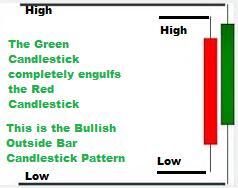Top Python Image Processing Libraries
Contents:


It is also possible to create new file decoders to expand the library of file formats accessible. Pillow is an image processing library for Python derived from the PIL or the Python Imaging Library. Although it is not as powerful and fast as openCV it can be used for simple image manipulation works like cropping, resizing, rotating and greyscaling the image. Another benefit is that it can be used without NumPy and Matplotlib. Scikit-image is an open source Python package that works with NumPy arrays. It implements algorithms and utilities for use in research, education, and industry applications.
Albumentations: Fast & Flexible Image Augmentations for Computer … – Unite.AI
Albumentations: Fast & Flexible Image Augmentations for Computer ….
Posted: Wed, 12 Apr 2023 17:32:01 GMT [source]
This performs an Input string hashing so as to generate unique avatar images that could be used as on web applications. We can use skimage.measure.label to find and label connected objects in an image. Create and examine a histogramof the object areas obtained with skimage.measure.regionprops. Using the function connected_components, find two ways of printing out the number of objects found in the image. Note the new import of skimage.measure in order to use theskimage.measure.label function that performs the CCA. In the 1-jump version, only pixels that have direct neighbors along rows or columns are considered connected.
Top Image Processing Python Libraries
The set of numbers is referred to as the picture element, which we know as pixels. Seaborn is one of the most popular python libraries among data scientists because it helps understand the correlation between various data points. This is because it offers excellent visualizations that make the model understandable and attractive. The Python Imaging Library, or PIL for short, is one of the core libraries for image manipulation in Python.
Pgmagick is a very good multipurpose image processing library for Python. It is actually a wrapper for GraphicsMagick which originally derives from ImageMagick. Scikit-image is a collection of algorithms for image processing. A team of volunteers provides high-quality, peer-reviewed code available for usage from Python.
How to Create Stunning Panoramas With Python and OpenCV – MUO – MakeUseOf
How to Create Stunning Panoramas With Python and OpenCV.
Posted: Sun, 02 Apr 2023 07:00:00 GMT [source]
As a scientific discipline, computer vision refers to the theory and technology of creating artificial systems that receive information from images. This function processes a single image using the corresponding uImageBlueprint, and stores the textual data of each section in a CSV file. In image processing sometimes we need to draw some different shapes for any reason.
You can see a list of all the filters available in the ImageFilter documentation. You’ll see an application of the smooth filter in the next section, in which you’ll learn about more filters in the ImageFilter module. The Python Pillow library has several built-in kernels and functions that’ll perform the convolution described above. You don’t need to understand the math of filtering through convolution to use these filters, but it always helps to know what’s happening behind the scenes when using these tools. In the code above, you also change the resolution of the cropped image using .resize(), which needs a tuple as a required argument.
Python libraries for image processing and computer vision
SimpleCV is a python framework that uses computer vision libraries like OpenCV. This library is quite simple and easy to use and can be really helpful for quick prototyping. The package is imported as skimage, and most functions are found within the submodules. These Python libraries provide an easy and intuitive way to transform images and make sense of the underlying data. Applying custom filters to photos and blurring images are examples of image smoothing. Performing image thresholding, such as simple thresholding and adaptive thresholding.
Python Image Processing: A Tutorial – Built In
Python Image Processing: A Tutorial.
Posted: Wed, 12 Apr 2023 14:00:00 GMT [source]
Recall how we determined the root mass inthe Thresholding episodeby counting the pixels in the binary mask. But here we want to calculate the area of several objects in the labeled image. The skimage library provides the function skimage.measure.regionpropsto measure the properties of labeled regions. It returns a list of RegionProperties that describe each connected region in the images. The properties can be accessed using the attributes of the RegionProperties data type.
Meet MiniGPT-4: An Open-Source AI Model That Performs Complex Vision-Language Tasks Like GPT-4
Try running the computer vision libraries above with different sigmas in the ry and cx direction. For example, a sigma of 1.0 in the ry direction, and 6.0 in the cx direction. Another strategy to fill those missing values is to reflect the pixels that are in the image to fill in for the pixels that are missing from the kernel. We can create histograms of images with the np.histogram function.

# OpenCV images are interpreted as BGR, the depth-stacked array will be written to an 8bit RGB PNG-file called ‘gradients.png’ True. The NumPy library is used to support multi-dimensional arrays, matrices, etc. in the Python programming language. Now we will discuss another important image processing library of Python OpenCV. Also commonly known as ITK–Insight Segmentation and Registration Toolkit–is a widely used image processing library.
This function processes a folder of images using the corresponding uImageBlueprint, and stores all of their textual data into a CSV file. A Python library which facilitates the processing of numerous images with a uniform layout (e.g. calendars, schedules, etc.) by inputting their textual data into a CSV file. We have discussed some of Python’s important image processing libraries. These image processing libraries will help you in your study or professional life. Here is a sample code for filtering images and we have used the scikit-image library for that.
Image formats
If all goes well, you can choose from your https://forexhero.info/ to view the image. So, first of all, you have to install the pillow in your system. Development of the original project, known as PIL, was halted in 2011, after which a successful project called Pillow equipped the storage space and added python3 support. If you’re not sure which to choose, learn more about installing packages.
- Objectives Explain why applying a low-pass blurring filter to an image is beneficial.
- The interface is in Python, which is appropriate for fast development, but the algorithms are implemented in C++ and tuned for speed.
- In this episode, we will learn how to use skimage functions to blur images.
- It provides image processing features that are similar to ones found in image processing software such as Photoshop.
SciPy is a top library primarily created for mathematical and scientific computations, with around 15.2K dependent packages and 43.4K dependent repositories. However, it also supports multi-dimensional image processing by loading the submodule scipy.ndimage. This library is another excellent alternative if you are looking for various applications such as image segmentation, analyzing images, face detection, feature extraction, and more. Image processing is a technique used to modify or enhance an image or extract relevant details from it. Python is a popular choice for such image-processing applications because of its ease of use, simplicity, and a vast array of image-processing libraries.
It supports languages like Python, R, Java, C#, Lua, Ruby, TCL, and C++. It has its own programming language that allows users to manipulate their image files in many ways, including resizing, adjusting color balance, or applying filters and effects. Image processing with ImageMagick can be done from the command line or through a graphical interface. Pgmagick is a Python-based wrapper for the GraphicsMagick library. The GraphicsMagick image processing system is sometimes called the Swiss Army Knife of image processing. SimpleITK is written in C++, but it’s available for a large number of programming languages including Python.
The tuple that you use as an argument defines the new width and height of the image in pixels. Let us walk you through the most valuable and popular tools and libraries for image processing in Python. You can use these libraries in any of your image processing projects in Python. It includes not only conversion functions but also additional tools for visualization and medical imaging processing! This library is even used by some well-known software, such as 3D Slicer.
You can also see some noise surrounding the cloud and the fence, which is due to small changes in the original JPEG compression in the region surrounding these items. Now that you’ve installed NumPy, you’re ready to use Pillow and NumPy to spot the difference between two images. The watermark has a rectangular outline, which is a result of the contour filter that you used earlier. If you prefer to remove this outline, you can crop the image using .crop(). The third argument provides the mask that you wish to use if you don’t want to paste the entire image.

The red squares represent pixels in the image that have a value of 255. The white squares represent pixels in the image that have a value of 0. The argument determines the factor by which you scale the image down. If you prefer to set a maximum size rather than a scaling factor, then you can use .thumbnail(). The size of the thumbnail will be smaller than or equal to the size that you set. The Python Pillow library is a fork of an older library called PIL.
Pillow/PIL
First let’s load another copy of our eight, and then make it look like a zero. Color manipulation, filtration , morphology, feature detection etc.. As a Data Scientist, you can use it for the conversion of each pixel into greyscale. You can read more from their official Scikit Image User Guide. Digital image processing is the use of computer algorithms to process digital images and then apply significantly more complex algorithms to the image.
While not exactly an image processing library, NumPy is one of the most important libraries for scientific computing in Python today. It provides powerful tools like linear algebra and Fourier transforms that make it easier to work with images. If you are doing serious mathematics or data analysis with your images, then this is probably the library you want to use. Thanks for reading this article on python libraries for image processing and for your patience. Share this article, it will give me the motivation to write more blogs for the data science community.

For the last bin, the array also has to contain the stop, so it has one more element, than the histogram. The drawing functions return indices to pixels that can be set directly. We can draw on skimage images with functions such as skimage.draw.rectangle(), skimage.draw.disk(), skimage.draw.line(), and more. We can resize images with the skimage.transform.resize() function. Since the function expects the first argument to be the file name, there is no confusion about what “data/chair.jpg” means. Here is an example showing how JPEG compression might impact image quality.
There are also automatic thresholding methods that can determine the threshold automatically for us. It is particularly useful for situations where the grayscale histogram of an image has two peaks that correspond to background and objects of interest. This weighted average, the sum of the multiplications, becomes the new value for the centre pixel .
